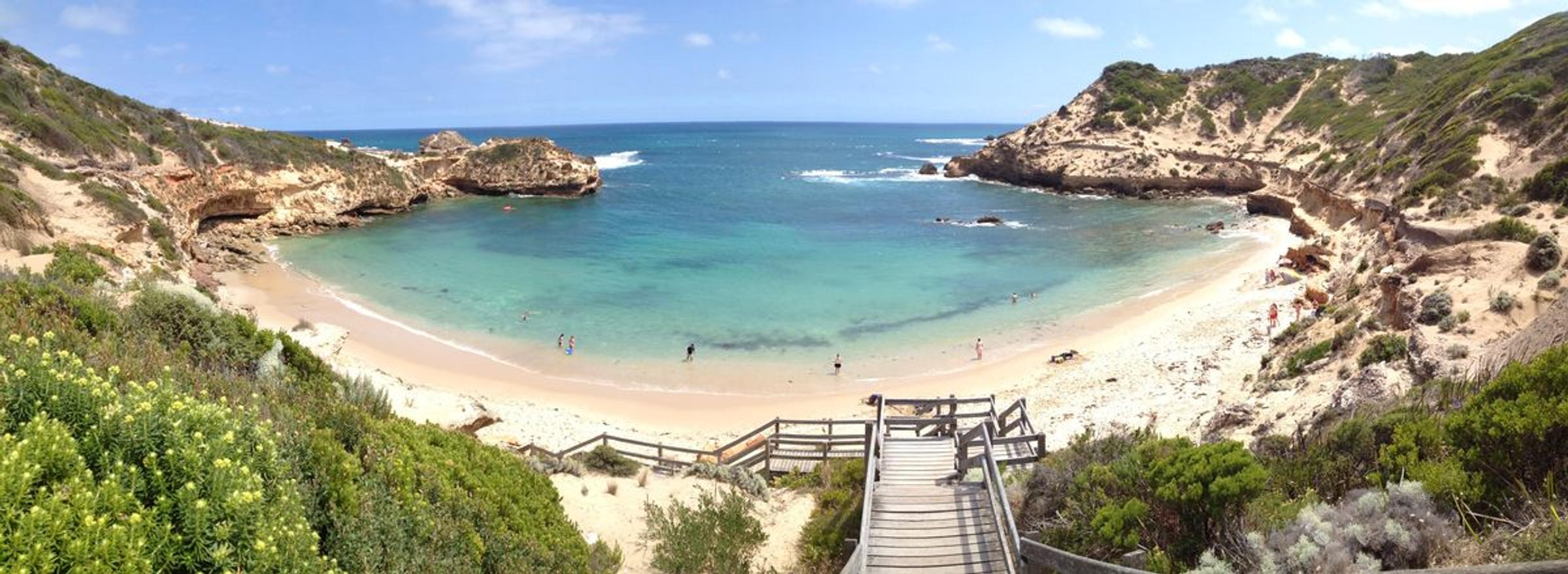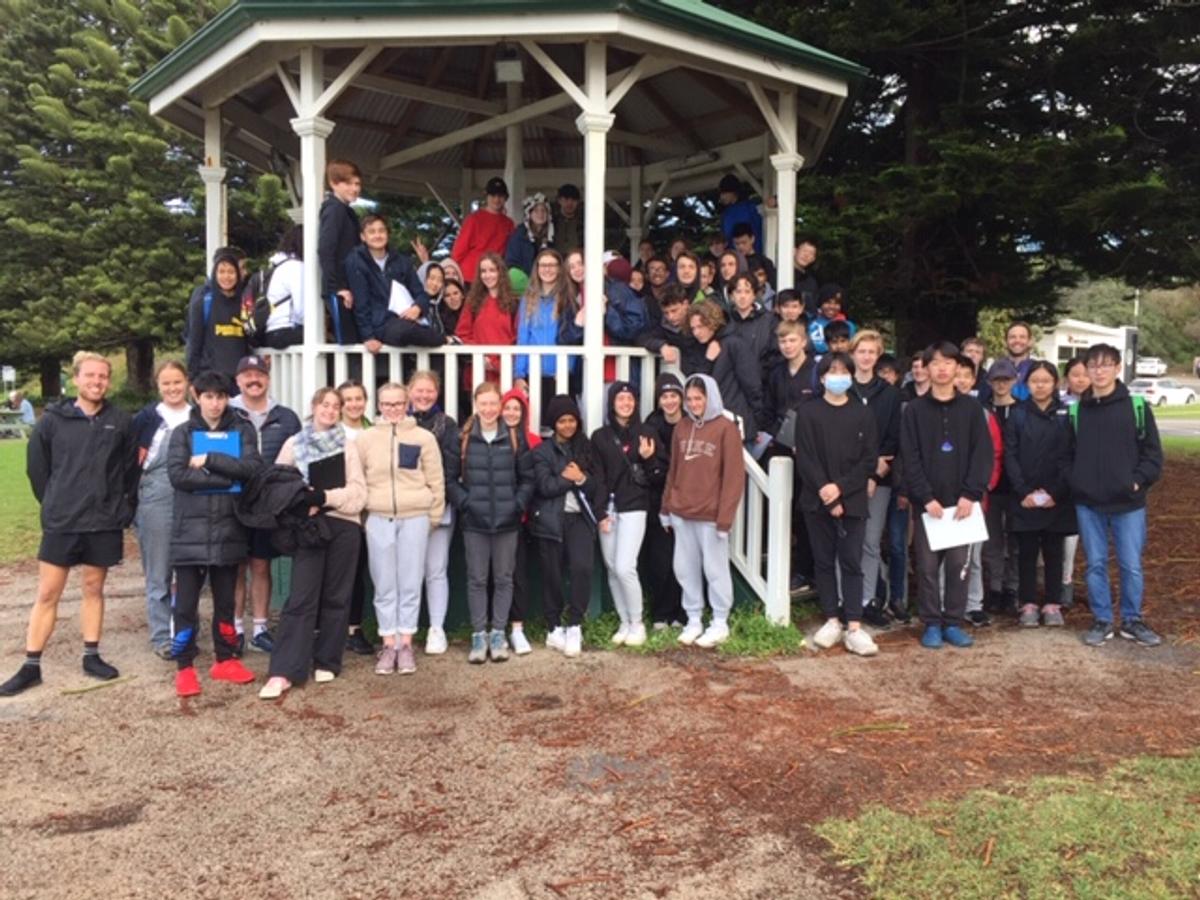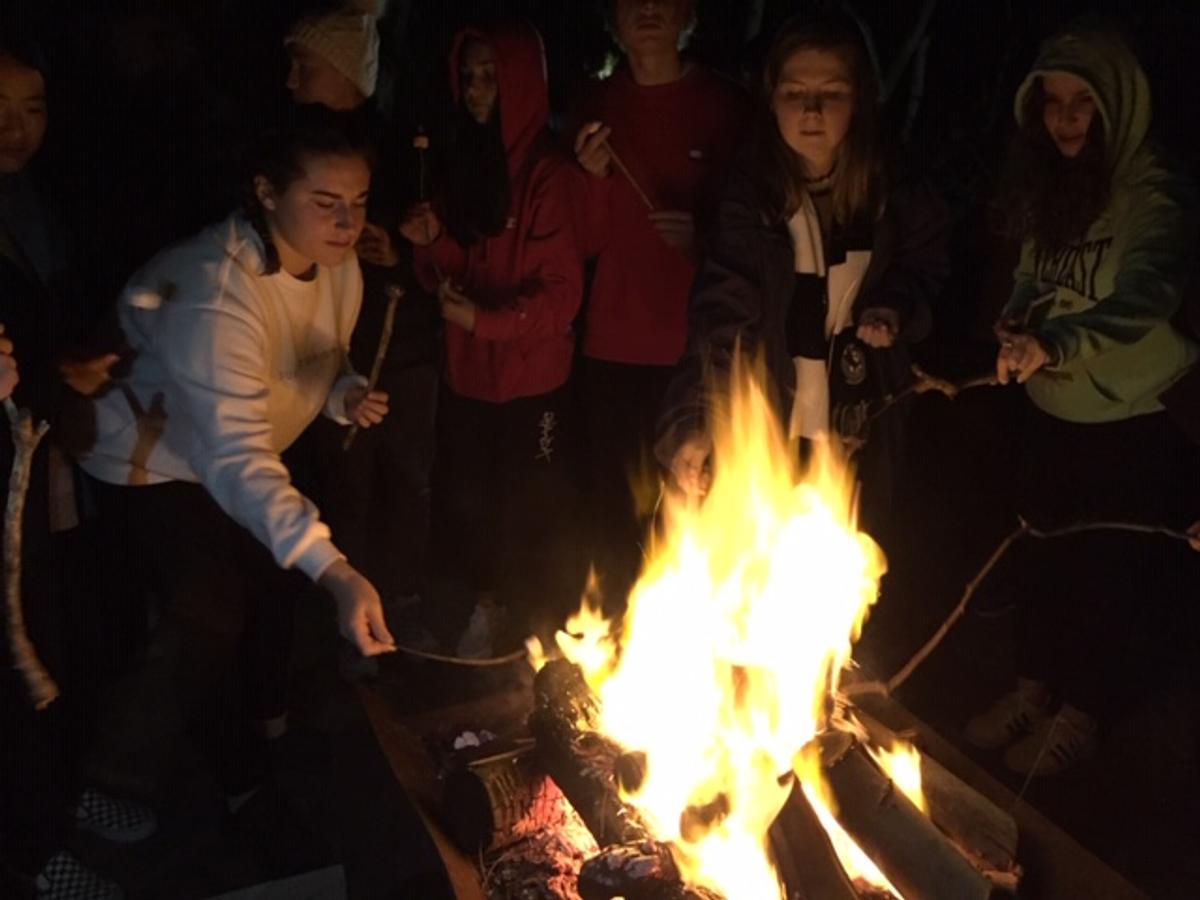HUMANITIES

YEAR 10 GEOGRAPHY CAMP - MORNINGTON PENINSULA
Our overnight camp to Mornington Peninsula took us across various coasts to explore how coastal environments influence management. Walking through familiar tourist locations and hidden retreats with a geographical lens highlighted the Mornington Peninsula’s unique, diverse and ever-changing coastline, enhancing our appreciation for the work that goes into protecting it for years to come.
After a one hour drive, we stopped at our first stop, St Paul’s beach where we walked across the coastline all the way to Sorrento SLSC. Although the weather was very windy we were still able to appreciate the remarkable view of many erosional landforms, such as stacks, cliffs and arches. When we got to Sorrento SLSC we had the amazing and valuable opportunity to talk to a Park Ranger who discussed the management strategies implemented at Sorrento Beach to help it be preserved.
We later arrived at Sorrento Front Beach, which showed a strong contrast to Sorrento Back Beach, being significantly calmer with smaller waves and a more sandy coastline. This made the area safer for younger families, as well as activities such as swimming.
During our lunch break in town, we were able to complete our next task of surveying the public on their use of the coast and their opinions on current coastal management strategies. This data was collected for our Coastal Investigation Report, where we are currently analysing the uses of various coastal environments, as well as the effectiveness of coastal management strategies and options for future strategies to be implemented in order to preserve the coasts.
We spent the night at Merrick’s Lodge, going over the day’s findings and enjoying toasted marshmallows by the campfire.
The next day we visited Point Leo Beach, a broad, flat beach, and one quite popular for tourism in the summer. The day was very nice, though a bit chilly, and we saw a few surfers go out into the water. This was an interesting place to visit as it showed a mix of both depositional and erosional properties, offering opportunities for a range of uses.
Our second stop on day two was at Jack’s Beach, a much less common tourism destination. Strategies such as a smaller car park and more discrete path discouraged large numbers of visitors to preserve the unique environment; a mangrove forest, displaying ultra depositional properties with little to no wave action.
Our final stop was Hastings (another depositional environment) for our lunch break and where we were able to spend time in town visiting stores and completing more surveys for our coastal report.
Overall, we saw a range of different coastal environments and the different ways that these places were managed.
Jasmine Appleford, Emily Chang, Fatima Lazo Rodriguez & Keira Van der Linden
Year 10 Students






